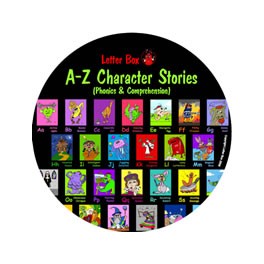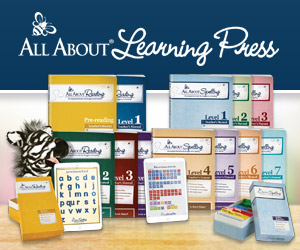Spelling with Pre-Schoolers
Teaching spelling with pre-schoolers lays a solid foundation for building knowledge and confidence that will have huge benefits now and in the future.
I recently read an article that said spelling was one of the most tested subjects but the least taught. I would have to agree whole heartedly. In most cases, children are given a weekly spelling list and are expected to memorise these words without being shown relevant spelling strategies. If a child has a poor memory, he tends to forget the spelling, but, if specific spelling strategies were taught, success would follow. We should be providing spelling with pre-schoolers as a learning curve that will help them make giant leaps forward.
Spelling methods vary
Every spelling guru has a variation of methods used to teach/learn spelling. But the important fact is, if we value other’s input, through reading and listening , we modify our own perceptions and come up with a much rounded understanding. This blog, Spelling with Pre-Schoolers, encourages parents and teachers to use the basic skill steps to develop spelling habits that will sustain spelling growth.
The spelling process
Spelling is a process that begins with phonological awareness and phonics, it moves forward to visual skills, morphemic knowledge ( prefixes and suffixes) and finally, etymological skills ( Greek & Latin roots and their meanings). These areas of spelling develop in an integrated fashion and are incorporated in each year level. This all sounds overwhelming but if broken down into a program that moves step by step, students consolidate one skill at a time and gain confidence and knowledge.
This blog is the second in a series of pieces that discusses the process before the child enters the formal stage of schooling. Teaching spelling to pre-schoolers is a heads up start to becoming a well informed speller. We all know that 0 years to 5 years is the greatest time for learning, but, I am still constantly amazed at the way young pre-school children are able to learn to read and spell with ease and excitement. Let the fun begin!!
Rules for the Journey
In saying that young children learn easily and with fun, there are some rules that must be adhered to; the spelling program has to be delivered consistently and in a well structured manner. Over the years I have studied many different ways and used many different programs to help children spell. I have chosen the best strategies to make certain that children succeed as early as possible. No child needs to be left behind.
Before Writing Spelling:
Before beginning to write spelling, there are a number of skills that need to be consolidated. All children in primary school should be using these skills to consolidate spelling but it is pivotal to early success. Let’s begin with
Phonological Awareness.
Phonological Awareness is the ability to manipulate sounds. It is the greatest predictor of reading and writing success. Sometime ago, I wrote the first article in the series to help early spellers-you can find the article at this link- http://letterboxlearntoread.com/learning-to-spell-as-a-pre-schooler/ . This blog is about syllabification. I have had an ongoing love affair with syllables and you will understand why as you read through the spelling blogs. There are many syllable types, but for now, we will only have to grasp the basic concept of a syllable and build knowledge from there. A syllable is a chunk of letters that must have a vowel sound.
I use syllable cards to add a visual input to the child’s understanding of syllable. At this stage, I tell the children that a syllable is a beat, because we are going to clap the syllables in a word.
https://www.youtube.com/watch?v=aYUJ71we9No
Stretching of sounds in Words
Stretching a word into its sounds is the second step in spelling with pre schoolers and struggling spellers. Later the student can match the corresponding letter to the sound.
I use rocks from garden shops for this exercise or even rocks from the garden would be fine. Begin with two and three letter words only.
- The first step is to show what you want the child to do. You might even have to show the child a few times, that is fine. I have provided a word list that you can use.
- Second step-sound out the words together-this will require a lot of practice.
- Third step-put out a rock for each sound
- Fourth step-you have nailed it so bring it all together-this means that every item that has been taught must be orchestrated!!!
Here are the steps for easy use:
- Clap the syllables in the word. ….put out a syllable card
- Stretch out the word…..use the rocks
Fantastic…. now practise these two skills and be ready for the another step next week.
While practising these skills, your child can easily learn the sounds of the alphabet.
Two products that will help your child learn the sounds easily.
These charts on the left are instantly downloadable to laminate. I have the chart on the desk beside the child and then once it is learnt, I place it on the wall. In this way, the child has the chart in front of him while learning the sounds from the CD. Click on the link below to below to buy the charts.
http://letterboxlearntoread.com/products-2/alphabet-desk-chart-recording-script/
The CD tells little stories about each character. Hence, the recordings develop vocabulary and introduce and consolidate sounds. Kids love the stories and the comical characters. Click on the link below and get instant success.
http://letterboxlearntoread.com/products-2/alphabet-chart-accompanying-cd/
I have reduced the price for this week because I want pre-schoolers to have the best start to school because NO child should be left behind!!
Have a great time learning with your child,
Ann
Email: letterboxdelivers@hotmail.com
Phone: 0414340883







I’m glad I came across this site!
My younger son is 4 and we are working with him on reading and spelling. He’s doing surprisingly well so far, but I am always looking for ways to teach him more effectively and efficiently. I’m glad that (so far) he enjoys it and I am trying to ensure that it is fun for him.
Thank you Craig,
You are certainly doing the right thing when you start engaging them in learning at this age. Zero to five is the greatest learning period!
Thank you for your comments,
ANN